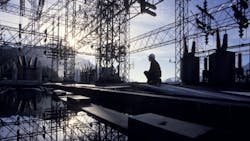One of the key challenges for electric trucks might be something as simple as language.
Kellen Schefter of the Edison Electric Institute pointed out that truck people think in terms of pumping gallons of diesel fuel and that it does not matter whether they pump that fuel at 6 a.m., 1 p.m. or 11 p.m., the price of the fuel stays the same.
However, utility companies think in terms of delivering kilowatt hours of power where the price of electricity varies all day long. At periods of high or peak use, the price is higher and when demand is lower the price per kilowatt hour is lower too.
And while truck people and utility people see things differently, in some ways they have a lot in common.
Consider this example: Run on Less, NACFE’s 2017 fuel economy demonstration, took place during hurricane season and several drivers were directly impacted by hurricanes Harvey and Irma. The important thing to remember is that despite the hurricane trucks were kept working delivering freight and following the hurricane helping with the cleanup.
I suppose you are wondering what this is supposed to mean to utility companies. Just like trucking companies have an obligation to make sure freight gets delivered despite circumstances outside of their control, utilities have the responsibility of making sure everyone gets power all the time.
In essence, both utilities and fleets have to manage risk on a daily basis so that their “product” gets delivered. A truck that breaks down gets replaced and the trailer moves on so the load can get to the customer. During Run on Less several of the trucks had to run with older, less aerodynamic trailers because the hurricanes disrupted freight, and some ROL trucks were tasked with helping alleviate freight issues in areas affected by the hurricanes.
This commitment to reliable service is fundamentally no different than that shown when a utility has to secure power from other utilities or regions during unexpected peak loads to maintain power to its customers, or where multiple utilities pre-stage repair crews in a region ahead of major storms to minimize response to outages.
Truck industry groups like CharIn, SAE and TMC might learn from the North American Electric Reliability Corporation (NERC) on how to develop and maintain standards for electric trucks and charging infrastructure. This non-profit group has a mission to assure the effective and efficient reduction of risks to the reliability and security of the grid.
So while it may seem like fleets and utility companies are talking different languages the truth is if they both look at their jobs as delivering products no matter what is happening around them, they can find common ground and a common language to begin the dialogue about how they can work together to meet the charging needs of the commercial battery electric vehicles that are coming into the market.
About the Author

Michael Roeth
Executive Director
Michael Roeth is the executive director of the North American Council for Freight Efficiency. He serves on the second National Academy of Sciences Committee on Technologies and Approaches for Reducing the Fuel Consumption of Medium and Heavy-Duty Vehicles and has held various positions with Navistar and Behr/Cummins.
